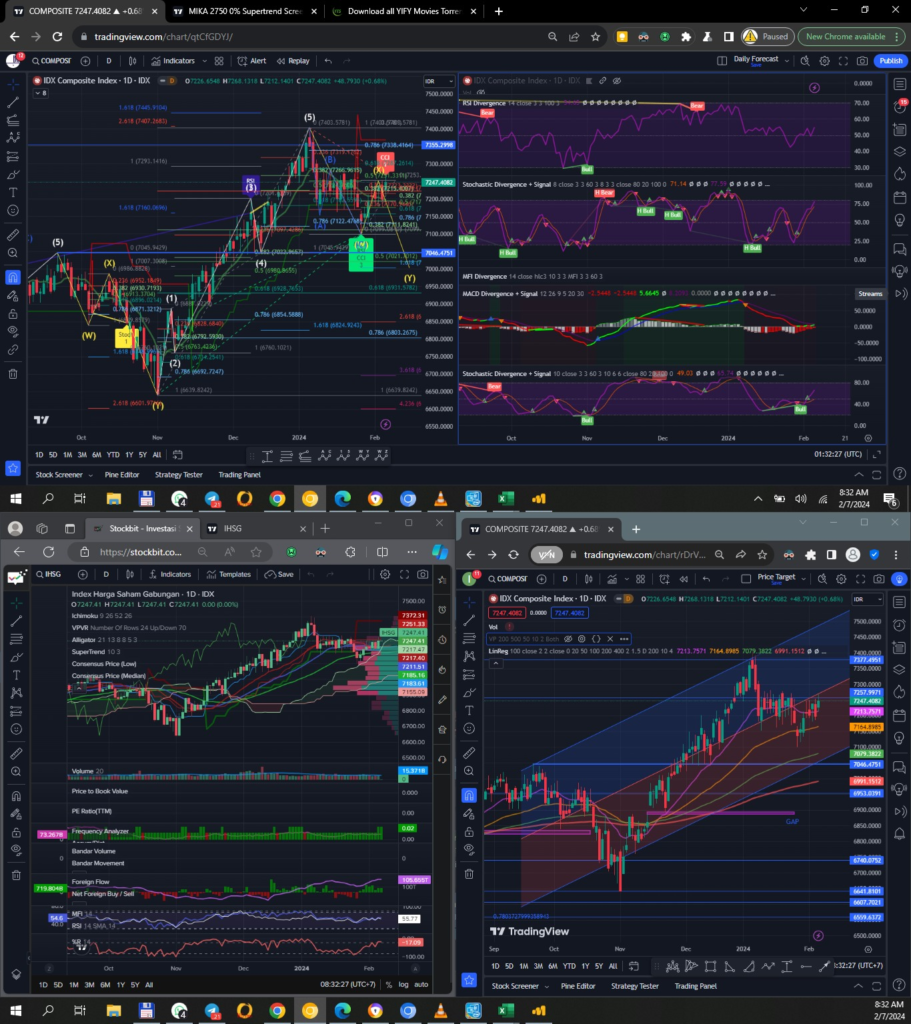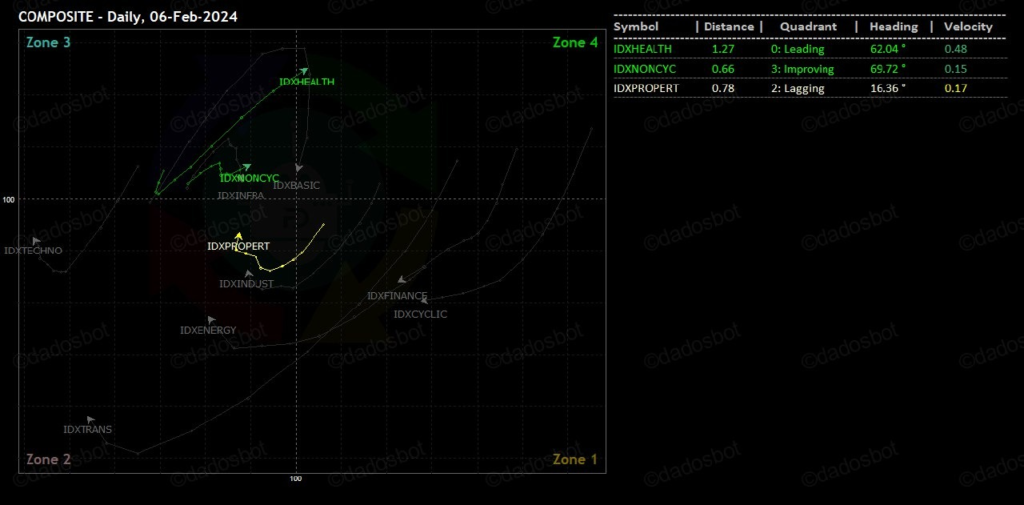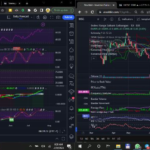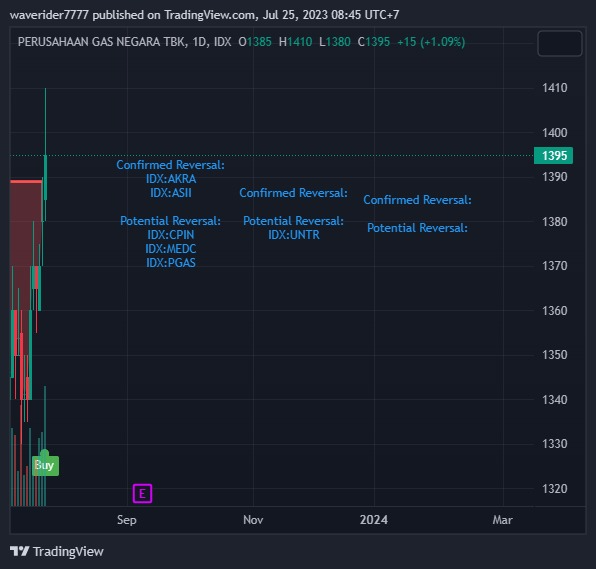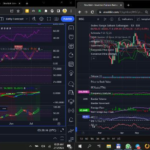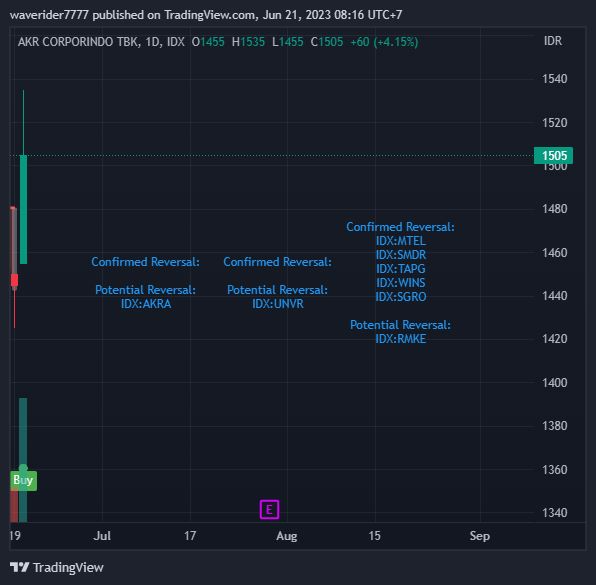Daily Analysis 2020207

February 07th, 2024
Good morning,
Dow……38521 +141.2 +0.37%
Nasdaq15609 +11.3 +0.07%
S&P 500.4954 +11.4 +0.23%
FTSE…..7681 +68.2 +0.90%
Dax……17033 +129.2 +0.76%
CAC……7639 +49.01 +0.65%
Nikkei..36160 -193.5 -0.53%
HSI……16137 +626.9 +4.04%‼️
Shanghai.2790+87.30 +3.23%‼️
IDX…..7247.41 +48.79 +0.68%
LQ45….980.62 +5.13 +0.53%
IDX30…497.84 +2.57 +0.52%
IDXEnergy..2083.20 +11.3 +0.54%
IDX BscMat.1260.63 -1.9 -0.15%
IDX Indstrl…1080.08 +3.03 +0.28%
IDXNONCYC.706.07 +6.37 +0.91%
IDX Hlthcare1347.28 +8.63 +0.64%
IDXCYCLIC…855.07 +3.03 +0.36%
IDX Techno4023.21 -46.10 -1.13%
IDX Transp 1556.10 -7.54 -0.48%
IDX Infrast 1534.44 +15.39+1.01%
IDX Finance.1500.44+8.28 +0.55%
IDX Banking.1339.65+7.27 +0.54%
IDX Property.. 697 +7.00 +1.02%
Indo10Yr.6.6729+0.0198 +0.30%
ICBI…376.5363 -0.1131 -0.03%
US2Yr.4.399 -0.075 -1.67%
US5Yr 4.122 -0.062 -1.50%
US10Yr4.104 -0.056 -1.35%
US30Yr.4.293 -0.050 -1.15%
VIX…13.06 -0.61 -4.46%‼️
USDIndx 104.2130 ‼️-0.239 -0.23%
Como Indx..269.05 +0.86 +0.32%
BCOMIN……135.71 +0.37 +0.27%
IndoCDS..74.69 – -%
(5-yr INOCD5) (02/02)
IDR…..15730.00‼️ +22.00 +0.14%
Jisdor.15734.00‼️ +29.00 +0.18%
Euro….1.0756 +0.0013 +0.12%
TLKM…25.39 +0.26 +1.03%
(3995)
EIDO……22.13 +0.24 +1.10%
EEM……39.58 +0.88 +2.27%
Oil…….73.31 +0.53 +0.73%
Gold..2051.40 +10.00 +0.49%
Timah..24836.00 -714.00 -2.79%
(Closed 05/03)
Nickel..15948.00 -45.50 -0.29%
(Closed 06/02)
Silver……22.48 +0.06 +0.25%
Copper.378.10 +0.95 +0.25%
Iron Ore 62% 128.63 – -%
(02/02)
Nturl Gas..2.001 -0.061 -2.95%
Ammonia China.2983.33 -166.67-5.29%‼️
(Domestic Price)(05/02/02)
Coal price 119.00 unch +0%
(Feb/Newcastle)
Coal price.121.90 -1.75 -1.42%
(Mar/Newcastle)
Coal price 122.25 -1.35 -1.09%
(Apr/Newcastle)
Coalprice. – – -%
(May/Newcastle)
Coal price .98.60 +0.45 +0.46%
(Feb/Rotterdam)
Coal price..97.35 +1.15 +1.20%
(Mar/Rotterdam)
Coal price..93.65 +0.85 +0.92%
(Apr/Rotterdam)
Coal price..91.65 +0.75 +0.83%
(May/Rotterdam)
CPO(Apr)..3841 +42 +1.11%
(Source: bursamalaysia.com)
Corn……438.75 -4.00 -0.90%
SoybeanOil 45.94 +0.61 +1.35%
Wheat….595.00 +4.75 +0.80%
Wood pulp..5104.00 unch +0%
(Closed 06/02)
©️Phintraco Sekuritas
Broker Code: AT
Desy Erawati/ DE
Source: Bloomberg, Investing, IBPA, CNBC, Bursa Malaysia
Copyright: Phintraco Sekuritas
Ijo semua, kecuali jepang. US bond rate turun, USD index turun, lanjut semoga ijo hari ini IHSG
Gold silver copper ijo, tin nickel merah, Oil ijo, gas merah, coal lanjut ijo, CPO juga
Coal Price chart menarik, Buy Signal MACD dan Supertrend
IHSG – stoch up, macd revup, MFI sw, w%uptrend BD flat, FNB dan vol naik dibanding kemaren, semoga ini bikin flat style ABC correction, B nya sampe hampir setinggi wave 5 sebelumnya, jadi C nya juga ga dalem dalem amat
Healthcare, Consumer Non-Cyclicals, Property nyusul. Energy lagi ngintip ngintip
Stochastic Buy Signal: BRPT GGRM MAPI ABMM SMRA SMAR. Big accum GGRM, TBIG TLKM sell, considering SOS
MACD Buy Signal: GGRM KLBF ADHI BFIN ERAA. Big accum GGRM ADHI, spike ERAA KLBF
Stochastic Continuation Signal and big accum: BBNI GGRM

